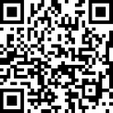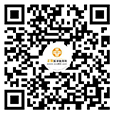Vital signs, or signs of life, include the following objective measures for a person: temperature, respiratory rate, heart beat (pulse), and blood pressure. When these values are not zero, they indicate that a person is alive. All of these vital signs can be observed, measured, and monitored. This will enable the assessment of the level at which an individual is functioning. Normal ranges of measurements of vital signs change with age and medical condition.
生命体征包括对个人所测的下列客观数据:体温、呼吸率、心率(脉搏)和血压。只要这些值不为0,就表明这个人是有生命的。生命体征可以观察、测量和监护,可以据此评估个体的功能水平。所测得的生命体征正常范围因年龄及身体状况不同而发生变化。
The purpose of recording vital signs is to establish a baseline on admission to a hospital, clinic, professional office, or other encounter with a health care provider. Vital signs may be recorded by a nurse, physician, physician's assistant, or other health care professional. The health care professional has the responsibility of interpreting data and identifying any abnormalities from a person's normal state, and of establishing if current treatment or medications are having the desired effect.
记录生命体征的目的是在病人到医院、诊所、诊室或其他健康保健部门就诊时为其建立一个基础数据。生命体征可以由护士、医生、医助或其他健康保健专业人员记录,健康保健专业人员有责任进行解释,识别异常发现,并确认当前治疗或用药起到了预期的疗效。
Vital signs are usually recorded from once hourly to four times hourly, as required by a person's condition.
根据病人状况,生命体征通常每小时记录一次或一小时记录四次。
The vital signs are recorded and compared with normal ranges for a person's age and medical condition. Based on these results, a decision is made regarding further actions to be taken.
生命体征记录后,可根据个人的年龄及疾病与正常范围进行对照,并根据对照结果决定是否进行后续治疗。
All persons should be made comfortable and reassured that recording vital signs is normal part of health checks, and that it is necessary to ensure that the state of their health is being monitored correctly. Any abnormalities in vital signs should be reported to the health care professional in charge of care. form www.med66.com
测量时应保持病人舒适,使病人相信这是健康检查的正常内容之一,并保证病人健康状况得到正确的监护,这一点也很有必要。生命体征异常应向主管护理的健康保健专业人员报告。
As there may be no recorded knowledge of a person's previous vital signs for comparison, it is important that a health care professional be aware that there is a wide range of normal values that can apply to persons of different ages. The health care professional should obtain as detailed a medical history from the person as soon as possible. Any known medical or surgical history, prior measurements of vital signs, and details of current medications should be recorded, as well. Physical exertion prior to measurement of vital signs, such as climbing stairs, may affect the measurements. This should be avoided immediately before the measurement. Tobacco, caffeinated drinks, and alcohol should be avoided for 30 minutes prior to recording.
也会出现没有先前生命体征记录供对照的情况,这时,健康保健专业人员知道适用于不同年龄人群的正常范围值就显得很重要。健康保健专业人员应尽快尽可能详细地获取个人治疗史,任何已知的内外科病史、以往的生命体征数据和当前用药详细情况也应加以记录。测量前的一些强体力活动,如爬楼梯等,可以影响测量结果,因此,在测量前应避免这些活动。记录前30也应避免吸烟、饮用含咖啡因饮料和酒精。
A person should be sitting down or lying comfortably to ensure that the readings are taken in a similar position each time. The equipment required include a watch with a second hand, an electronic or other form of thermometer, an electronic or manual sphygmomanometer with an appropriate sized cuff, and a stethoscope.
测量时病人应坐、卧舒适,每次测量位置要大致相同。测量用的器具包括秒表、电子或其他体温计、电子或其他人工血压计及一个听诊器,血压计袖带大小要合适。










 扫一扫立即下载
扫一扫立即下载


